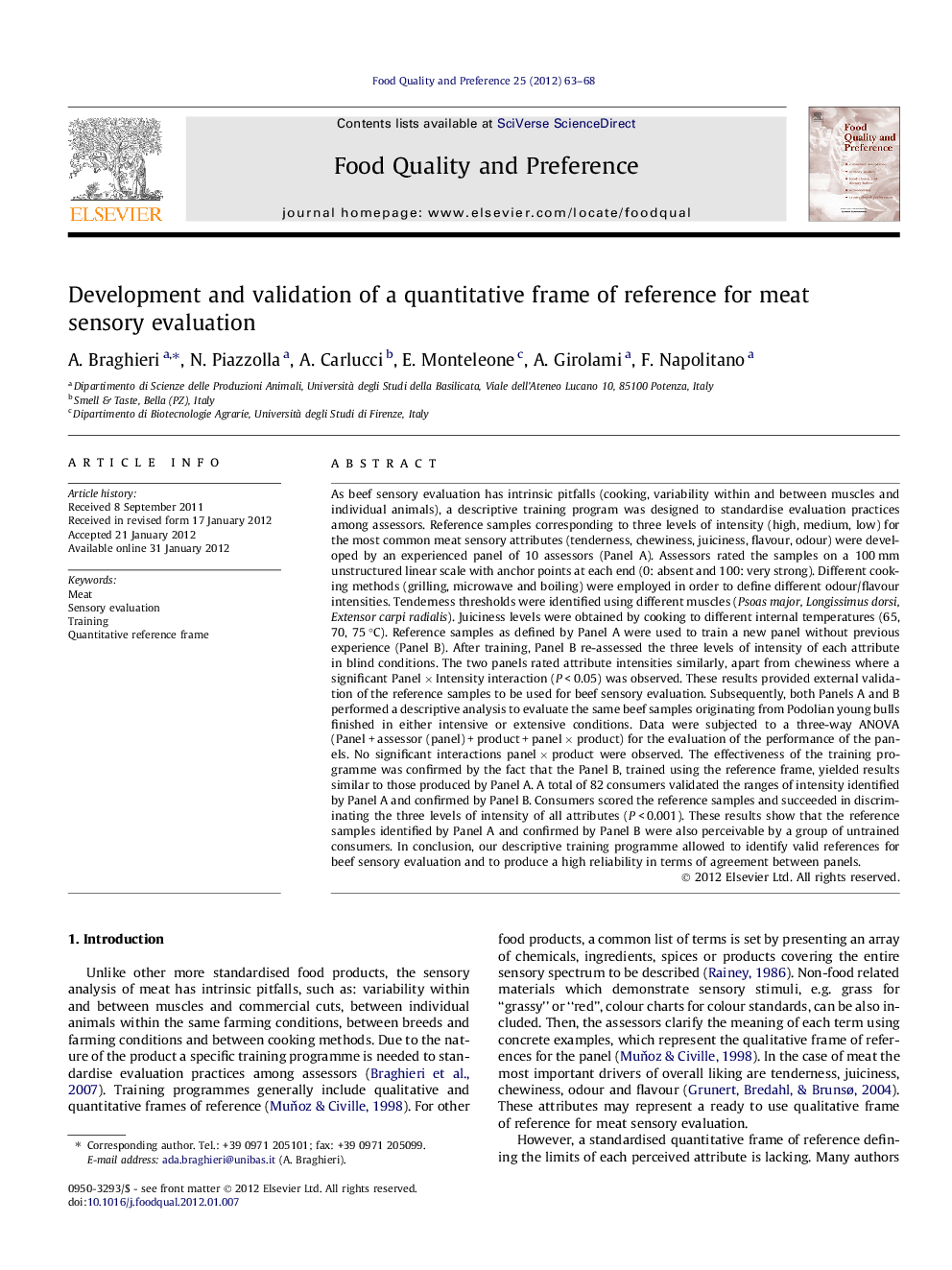| کد مقاله | کد نشریه | سال انتشار | مقاله انگلیسی | نسخه تمام متن |
|---|---|---|---|---|
| 4317603 | 1290604 | 2012 | 6 صفحه PDF | دانلود رایگان |

As beef sensory evaluation has intrinsic pitfalls (cooking, variability within and between muscles and individual animals), a descriptive training program was designed to standardise evaluation practices among assessors. Reference samples corresponding to three levels of intensity (high, medium, low) for the most common meat sensory attributes (tenderness, chewiness, juiciness, flavour, odour) were developed by an experienced panel of 10 assessors (Panel A). Assessors rated the samples on a 100 mm unstructured linear scale with anchor points at each end (0: absent and 100: very strong). Different cooking methods (grilling, microwave and boiling) were employed in order to define different odour/flavour intensities. Tenderness thresholds were identified using different muscles (Psoas major, Longissimus dorsi, Extensor carpi radialis). Juiciness levels were obtained by cooking to different internal temperatures (65, 70, 75 °C). Reference samples as defined by Panel A were used to train a new panel without previous experience (Panel B). After training, Panel B re-assessed the three levels of intensity of each attribute in blind conditions. The two panels rated attribute intensities similarly, apart from chewiness where a significant Panel × Intensity interaction (P < 0.05) was observed. These results provided external validation of the reference samples to be used for beef sensory evaluation. Subsequently, both Panels A and B performed a descriptive analysis to evaluate the same beef samples originating from Podolian young bulls finished in either intensive or extensive conditions. Data were subjected to a three-way ANOVA (Panel + assessor (panel) + product + panel × product) for the evaluation of the performance of the panels. No significant interactions panel × product were observed. The effectiveness of the training programme was confirmed by the fact that the Panel B, trained using the reference frame, yielded results similar to those produced by Panel A. A total of 82 consumers validated the ranges of intensity identified by Panel A and confirmed by Panel B. Consumers scored the reference samples and succeeded in discriminating the three levels of intensity of all attributes (P < 0.001). These results show that the reference samples identified by Panel A and confirmed by Panel B were also perceivable by a group of untrained consumers. In conclusion, our descriptive training programme allowed to identify valid references for beef sensory evaluation and to produce a high reliability in terms of agreement between panels.
► A quantitative reference frame was developed for relevant meat sensory attributes.
► Reference reliability was substantiated as repeatability between experienced and novel panels.
► The two panels validated the training programme through joint evaluations.
► Consumers confirmed the reference ranges of intensity indicated by the two panels.
Journal: Food Quality and Preference - Volume 25, Issue 1, July 2012, Pages 63–68